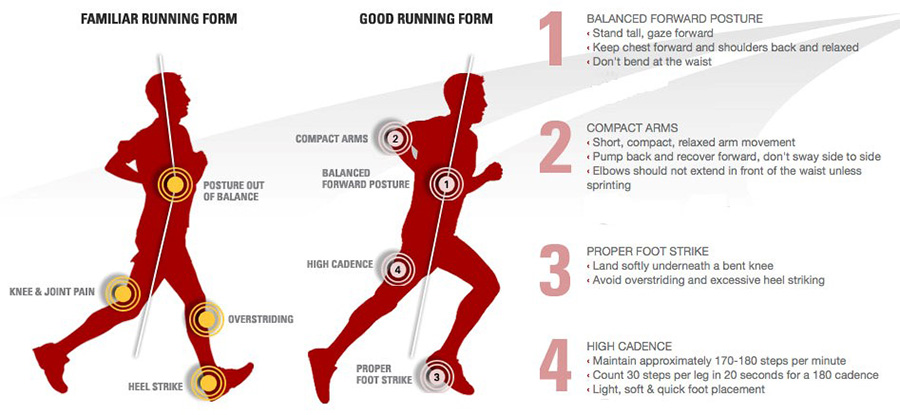Running Form
August 22, 2016
Are you a runner who is looking for the answers to the following questions...
Is there a better way to run? Am I running as efficient as I can? Should I be worried about my form? Where do I start if I want to change my running form? If these are questions that you ask yourself throughout a run then you are not alone. Every day something new comes out about running form and “the right way” to run.
There is plenty of research showing that there is biomechanically a proper way to run to optimize efficiency and avoid injury. However, people have varying body types and biological makeup therefore, we cannot have a standard running form that says do this and you will be all better. In order to make individuals faster, stronger, and more efficient with "their" best running form, each person needs to be analyzed individually. No one running form should be mimicking another's. So you find yourself reading article after article about proper foot strike, posture, and cadence, but how do you know what to start with or how to change these things.
Where can I start to improve my running form?
I have 3 main goals for changing running form:
- Injury prevention- being a collegiate running I was running a good deal of mileage and had a few reoccurring injuries that would sideline me for weeks to months at a time. I decided to take things into my own hands and really look at my running and figure out why am I having knee and hip pain and what do I need to change it for the long term.
- Becoming more Efficient/ energy conservation- where am I wasting energy and how can I change it?
- Improve Performance- I want to be stronger and faster.
So after thinking about these goals, I thought I can’t fix what I can’t see. My first step was to have someone record my running form in slow motion so that I can break down each aspect of it. I was amazed at the issues I found in the video and immediately made a plan to slowly make improvements. This worked for me because I do it for a living. I know what to look for in the video and how to slowly progress without causing more harm. Those runners that do not have the pleasure of working with it every day here are a few tips to avoid common injuries.
THINGS TO AVOID WHEN RUNNING
- Slouching posture
- Overstriding
- Bending from the waist
- Heeling striking or pulling after over striding
If you’re looking to perfect your running form or improve your performance, give the physical therapists at Superior Physical Therapy & Sports Rehab a call and we can help. We will perform a video analysis of your running form and based on those findings and the individual’s goals create a plan to make you a stronger, faster, and more efficient runner while also keeping you injury free.
Written by: Stephanie Pabst, PTA
Stephanie is a Physical Therapist Assistant who earned her Bachelor’s Degree in Exercise Science from Towson University, and was a member of Towson University’s Division I Cross Country and Track Team. She is an ACSM certified Personal Trainer and Basic Olympic Lifting Certified. She enjoys working with all ages and specializes in running form and technique analysis.
